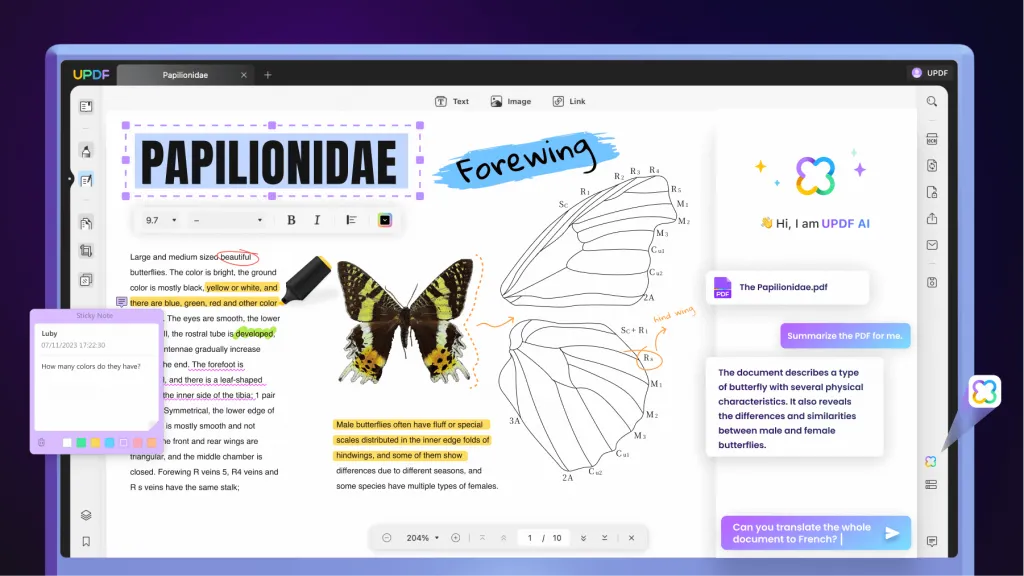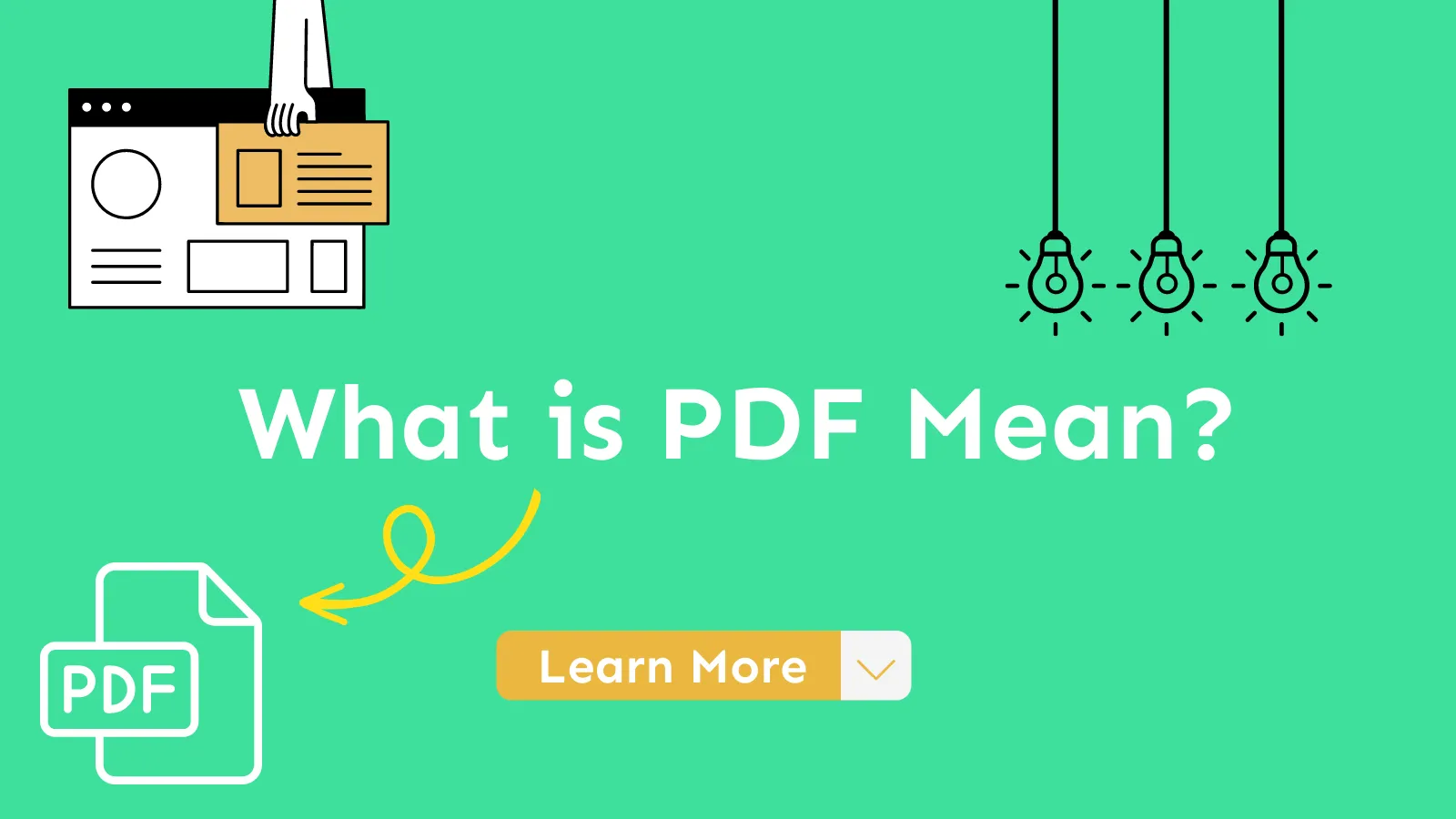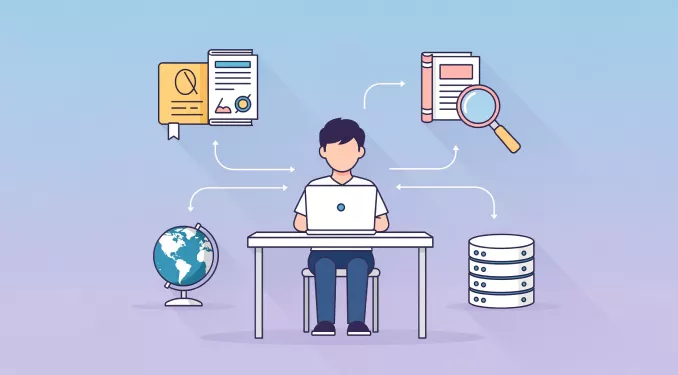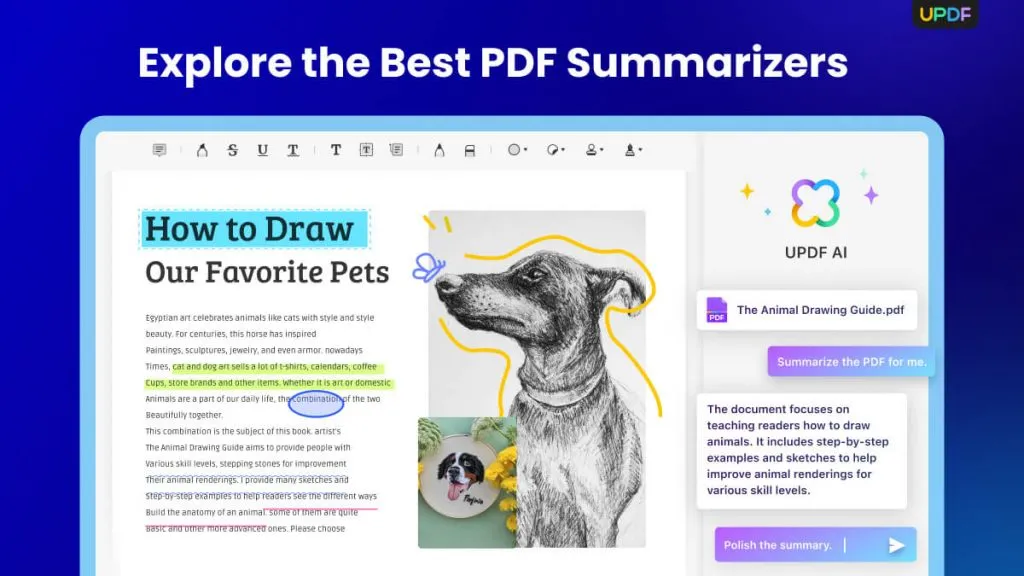Welcome to the world of rapidly advancing technology, where "Artificial Intelligence" or AI has everyone talking. From sci-fi movies to everyday life, AI's potential has ignited curiosity and excitement.
In this article, we'll explore "What is AI?" and take a thrilling journey into understanding this incredible technology. We'll learn how AI works, explore its different types, and weigh its pros and cons. Plus, we'll meet UPDF, an exceptional AI assistant designed for effortless PDF work. Get ready for an adventure into the world of AI and uncover all the incredible things it can do!
Windows • macOS • iOS • Android 100% secure
Part 1: What is Artificial Intelligence?
Artificial Intelligence, or AI, is a remarkable technology that's changing our world rapidly. At its essence, AI encompasses machines controlled by computers, equipped to accomplish tasks that were once the domain of human intelligence. These tasks include playing games, recognizing patterns, and understanding speech. AI machines learn from vast amounts of data to make decisions. While humans often supervise AI to ensure they make good choices, they can also operate autonomously in tasks like playing games once they grasp the rules. AI's potential to mimic human intelligence is driving innovation and reshaping various industries.

Part 2: How Does AI Work?
With the increase in the popularity of AI, makers are figuring out how their services or products can use it. AI is a component of technology like machine learning. AI requires a highly programmed structure of software and hardware for training and writing machine learning algorithms.
Generally, AI works by comprehending the massive training data, examining its patterns and correlations, and implementing its understanding to predict future combinations. Some of the major tasks performed by the AI are:
- Reasoning: AI tools are programmed to focus on picking suitable algorithms to produce the desired results.
- Creativity: This property of the AI uses rules-based systems, neural networks, statistical methods, and other techniques to produce new music, new text, new ideas, and new images.
- Learning: The significant aspect of AI programming is creating rules and acquiring data for converting it into practical information. AI algorithms provide specific information to computing devices and step-by-step guides on how to complete particular tasks.
- Self-correction: AI systems are designed to improve themselves continuously and incorporate modifications to deliver the most accurate outcomes.
Part 3: What are Machine AI and Deep AI
To understand deeply what AI technology is, we must understand its branches. Artificial Intelligence is a broad subject, and Machine AI is its subset. Similarly, Deep AI is the subset of Machine AI. In other words, AI is a series of systems where AI is the largest, Machine AI is the middle, and Deep AI is the smallest.
- Machine AI
A subset of AI that allows optimization is known as Machine AI. When this system is set up correctly, it allows us to make predictions that can minimize errors that might arise from guessing.
For instance, prominent organizations such as Amazon take the help of Machine AI to recommend related products based on the customer's searches and previous buying experiences.
Moreover, Machine AI is based on the structure of reinforcement learning, where a computing device learns from experiences and by interacting with the surroundings. Its responses are improved by receiving continuous feedback.
- Deep AI
As explained earlier, Deep AI is the subset of Machine AI. But the main difference between the two is how both the AI systems learn algorithms and how much data they use to execute specific tasks.
With the help of Deep AI, companies automate many feature extraction processes and eliminate some human intervention in specific tasks. Moreover, it also enables the use of massive data sets, enabling scalable machine learning. This property helps to explore the unstructured data as well.
Furthermore, Deep AI requires more comprehensive data for enhanced accuracy and is supposed to be more suitable for complicated tasks such as fraud detection and virtual assistants.

Part 4: What are the 4 Types of AI
With the help of AI, many industries are reducing the time required to complete specific tasks. The main industries benefiting from AI include education, medicine, environment, and health.
Based on the defined set of tasks, AI is divided into the following 4 types:
1. Reactive Machines
Reactive machines are also task-specific as they have no memory and are designed to generate the same output every time. Such machines help take customer data, like search or purchase history and use this information to recommend them related products or services.
This type of AI is known as "Super," because of the amount of work they do. For example, the average human mind can not process a person's entire Netflix history and recommend customized shows accordingly. Reactive machines work well in inventions such as self-driving cars.
2. Limited Memory
Another type of AI is Limited Memory. The working algorithm of this AI replicates the way our brain neurons work. The more it interacts with humans, the sharper and more trained it becomes.
It is designed on a Deep AI mechanism, due to which improves image recognition and different reinforcement learning types. Moreover, these AI are programmed to produce based on past and present data.
For example, a self-driving car is designed with limited memory. It learns on the road while observing other cars for their proximity, speed, and directions.
3. Theory of Mind
This type of AI is built for future use, so there are no worldly examples of this type.
If this AI technology is developed, it will be programmed based on the potential to comprehend humans and how they have emotions and react in certain situations. In return, this information will help AI to behave in their surroundings and react accordingly.
Moreover, it is also assumed that AI based on a theory of mind can understand human behavior and predict possible reactions and intentions.
4. Self-awareness
The final type of AI is self-awareness which is also defined for future use. This type of AI does not exist yet, but makers are planning for the future.
The idea behind this type is beyond the theory of mind, where AI will be aware of their capabilities, self-being, and ability to predict others' behaviors.
Part 5: What are the Pros and Cons of AI
Artificial Intelligence is being used more and more, so it's important to weigh the pros and cons. This section will look at both sides of AI.
Pros
- Error-free Processing: AI-based machines execute tasks with high accuracy, reducing human errors and minimizing losses.
- Reduction in Human Error: Properly programmed computers significantly reduce errors and improve precision.
- Available 24x7: AI-powered machines can work tirelessly without breaks, increasing productivity.
- Faster Decisions: AI enables quick decision-making and efficient actions, outpacing human capabilities.
- Complex Problem Solving: AI's use of advanced algorithms helps tackle intricate real-world problems effectively.
Cons
- Overreliance and Autonomy: Depending too heavily on AI systems without appropriate human oversight can be risky. AI may make errors or behave unexpectedly, and if humans blindly rely on AI without critical judgment, it could lead to harmful consequences.
- Job Displacement: One of the most significant concerns with AI is the potential for automation to replace human jobs. As AI systems become more capable, they could lead to significant job losses in various industries, causing economic disruptions and unemployment for certain job roles.
- Bias and Fairness: AI algorithms learn from data, and if the training data contains biases (which is often the case), the AI system can perpetuate and amplify these biases.
Part 6: Which AI is the Best One
Meet UPDF AI, the most advanced AI assistant for working with PDFs. UPDF AI has been released with exciting new features and capabilities. With UPDF AI, you can complete your PDF tasks faster and easier than ever. UPDF AI is a versatile and powerful tool that revolutionizes the way you interact with PDF documents. Whether you need assistance with understanding complex texts, refining your writing, or simply optimizing your productivity, UPDF AI is your go-to AI assistant for all things PDF-related.
Windows • macOS • iOS • Android 100% secure

Let's take a closer look at what UPDF AI can do:
- Chat Interface: UPDF AI provides a user-friendly chat interface where you can interact directly with the AI assistant. You can ask questions, seek assistance, and receive answers in real time, making your PDF tasks more efficient and convenient.
- PDF Summarization: With UPDF AI, you can easily summarize PDF documents. The AI assistant can extract key information, condense lengthy texts, and provide you with concise summaries, saving you time and effort in understanding large volumes of information.
- PDF Translation: UPDF AI excels at quick and accurate language translation within PDF documents. It eliminates the need for switching between translation tools and PDF readers/editors, allowing for seamless multilingual communication.
- Explain PDF: When dealing with technical content, educational materials, medical terms, or any other complex information, UPDF AI can help make them more comprehensible. The AI assistant can provide simplified explanations, breaking down intricate concepts into easily understandable language.
- PDF Writing: UPDF AI acts as a comprehensive writing assistant for your PDF documents. It allows you to brainstorm ideas, check grammar and spelling errors, and polish the content all in one place. This feature ensures that your PDFs are well-crafted, professional, and error-free.
Try UPDF AI today and experience the amazing power of AI that will elevate your PDF editing and productivity to the next level. With UPDF AI by your side, handling PDFs becomes more accessible, efficient, and rewarding.
Conclusion
To sum it up, AI is an amazing technology that can do incredible things. AI continues to shape our world in remarkable ways. From improving efficiency to enhancing decision-making, its potential is boundless. As we navigate the diverse facets of AI, We've seen how UPDF, the special AI assistant for PDFs, makes working with PDFs super easy. It can summarize, translate, and help with writing. If you want to improve your PDF editing, UPDF is the best choice.
If you want to make editing PDFs easier, UPDF AI is the perfect tool for you. Try it out and see how it can transform your work and make you more productive. Don't miss the chance to revolutionize how you handle PDF tasks!
Windows • macOS • iOS • Android 100% secure
 UPDF
UPDF
 UPDF for Windows
UPDF for Windows UPDF for Mac
UPDF for Mac UPDF for iPhone/iPad
UPDF for iPhone/iPad UPDF for Android
UPDF for Android UPDF AI Online
UPDF AI Online UPDF Sign
UPDF Sign Edit PDF
Edit PDF Annotate PDF
Annotate PDF Create PDF
Create PDF PDF Form
PDF Form Edit links
Edit links Convert PDF
Convert PDF OCR
OCR PDF to Word
PDF to Word PDF to Image
PDF to Image PDF to Excel
PDF to Excel Organize PDF
Organize PDF Merge PDF
Merge PDF Split PDF
Split PDF Crop PDF
Crop PDF Rotate PDF
Rotate PDF Protect PDF
Protect PDF Sign PDF
Sign PDF Redact PDF
Redact PDF Sanitize PDF
Sanitize PDF Remove Security
Remove Security Read PDF
Read PDF UPDF Cloud
UPDF Cloud Compress PDF
Compress PDF Print PDF
Print PDF Batch Process
Batch Process About UPDF AI
About UPDF AI UPDF AI Solutions
UPDF AI Solutions AI User Guide
AI User Guide FAQ about UPDF AI
FAQ about UPDF AI Summarize PDF
Summarize PDF Translate PDF
Translate PDF Chat with PDF
Chat with PDF Chat with AI
Chat with AI Chat with image
Chat with image PDF to Mind Map
PDF to Mind Map Explain PDF
Explain PDF Scholar Research
Scholar Research Paper Search
Paper Search AI Proofreader
AI Proofreader AI Writer
AI Writer AI Homework Helper
AI Homework Helper AI Quiz Generator
AI Quiz Generator AI Math Solver
AI Math Solver PDF to Word
PDF to Word PDF to Excel
PDF to Excel PDF to PowerPoint
PDF to PowerPoint User Guide
User Guide UPDF Tricks
UPDF Tricks FAQs
FAQs UPDF Reviews
UPDF Reviews Download Center
Download Center Blog
Blog Newsroom
Newsroom Tech Spec
Tech Spec Updates
Updates UPDF vs. Adobe Acrobat
UPDF vs. Adobe Acrobat UPDF vs. Foxit
UPDF vs. Foxit UPDF vs. PDF Expert
UPDF vs. PDF Expert









 Enya Moore
Enya Moore 
 Enola Miller
Enola Miller 
